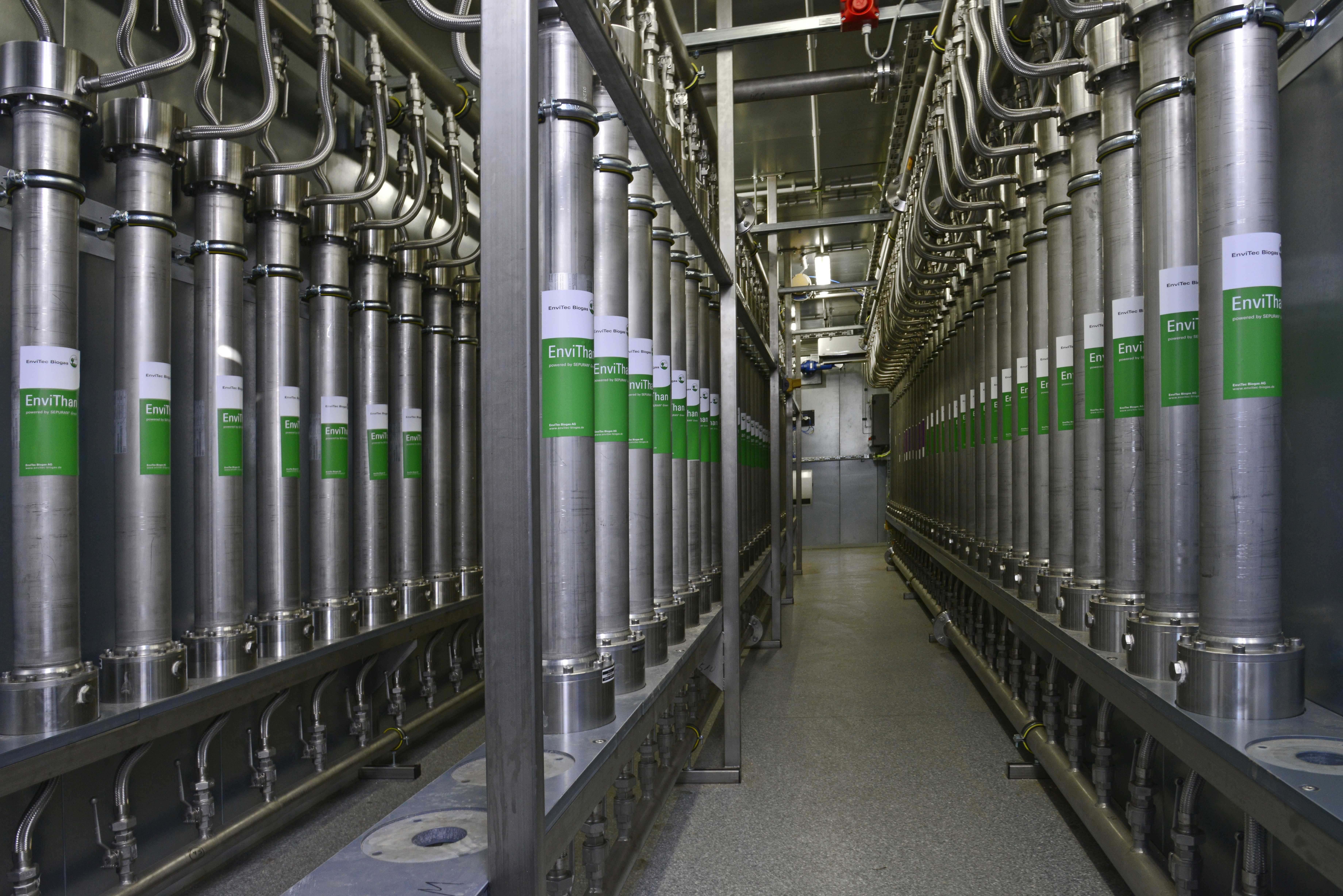
EnviTec Biogas will be on hand to offer visitors the complete picture of emerging biomethane gas to grid technologies at Cereals 2014.
From their stand number B 321–3, the company will be explaining how an attractive tariff under the Renewable Heat Incentive is making this type of technology a compelling choice for farmers and landowners in the arable sector.
Crops work particularly well with this renewable technology as they produce a high performing gas yield.
Biomethane is derived from biogas. Anaerobic digestion fermentation produces a gas mixture of methane and carbon dioxide, as well as small amounts of hydrogen, hydrogen sulphide and, in some cases, ammonia.
Mike McLaughlin, a director of Envitec Biogas said: “Until recently the only viable option was to burn the biogas in a CHP and claim the feed-in tariff for the electricity produced.
“However a CHP only converts about 40% of the energy in the biogas into electricity with the rest of the energy going to produce heat – fine if you have a use for the heat but in most circumstances that has proved very difficult.
“By cleaning up the biogas into biomethane and injecting that into the natural gas grid almost all of the energy is used – which is much more efficient and sustainable.”
A major benefit of biomethane gas is that it can be used in the same flexible manner as natural gas - and in the process move away from fossil fuel dependence towards more sustainable energy supply.
Another attraction is that biomethane’s storability is much better than that of other forms of energy and it can be deployed in a decentralised manner, enabling it to be easily fed into a conventional natural gas grid.
EnviTec Biogas UK - a market leader in the design, manufacture, supply and servicing of integrated biogas plant and gas upgrading technology - offers upgrading technology that is simple, flexible and meets the demands of the future, with EnviThan.
Of particular appeal is the ‘farmscale’ size of the plant. Farmers have in the past shied away from such ‘gas to grid’ projects using old technology, due to the size required to be viable, that is now no longer the case.
Mike added: “New technology has moved forward, and it is meaning that new smaller, gas to grid plants are now available which can still deliver a compelling business model.
“It’s perfectly reasonable to have a gas to grid plant on a UK arable farm without it being out of place.
“As well as high-performance plant, key to a successful installation is the presence of an established service and support network, which can be relied upon now and in the future.
“Landowners and farmers introducing biogas units and associated gas upgrading technology plant to their premises are making a large investment. As a result, they are seeking reassurance that the long-term maintenance and servicing of the plant can be met.
“Crop farmers want to know that the process is in safe hands - and that their investment in the future of renewable energy will continue to perform efficiently – the same as any other equipment on the farm.
“As a result, purchasers should scrutinise the ability of their supplier to support their purchase over the long-term. Our approach is that if we have to service it for the lifetime of the tariff then we will make sure it is well built in the first instance using quality components – that way our job will be simpler and cheaper in the long run. It is the lifetime cost that is important and our experience gained from the more than 50MW of plants that we own and operate gives us a unique insight into what is really important in plant design.
“This is an important consideration in the decision-making process, to ensure the smooth-running of the plant now, and in the future.”
